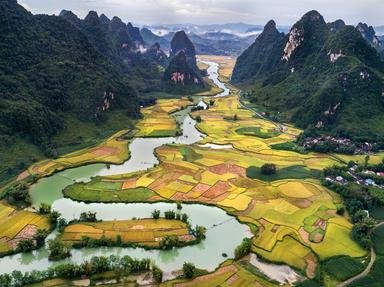
Good Evening, Vietnam Trivia Quiz
City or Island?
Any time of the day or night, it helps to know where you are and what you are looking at. Decide whether each of these is a city on the mainland of Vietnam or an island off its coast. Apologies for the missing diacritical marks that don't work here!
A classification quiz
by looney_tunes.
Estimated time: 3 mins.
- Home
- »
- Quizzes
- »
- Geography Trivia
- »
- Asia
- »
- Vietnam